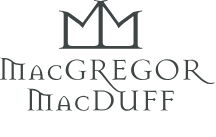What was the Great kilt?
The exact origin of how the kilt we know today was created has been disputed for decades, but what is known is that it is derived from the Féileadh Mór or Great Kilt. The great kilt was a garment worn by highland men, starting as far back as (according to historical records) the late 16th century but was probably worn for quite some time before then. Vastly different from the kilts we know today, the great kilt would have been made from 18 feet of material that a highlander would fold into pleats then wrapped around his waist with the excess material then draped over the chest and shoulder.
How was the great kilt worn?
The popular story is that the highlander would lay the material flat on the floor to shape the pleats then lay down on it to wrap it around himself, but this is also disputed. Most highland dwellings would have been too small to accommodate such a large piece of material being laid out on the floor and this is equally unlikely to be done outside due to Scotland's unforgiving weather. It’s thought that most great kilts would have had loops inside the kilt and a piece of yarn or leather would have been threaded through them to keep the kilt’s shape. This would have allowed the kilt to be put on and taken off without too much hassle.
Was it functional?
The great kilt was an incredibly functional piece of clothing as it would have helped keep the highlanders warm even in the midst of Scotland's harsh winters and even with their legs being exposed to the elements. With so much material being used to create the kilt, there would have also been excess that not only could be draped over the head of the wearer but also folded in such a way to form pockets. Stories also mention that during the highland winters the rain would freeze on the outside of the kilt and create an insulating barrier from the freezing temperatures, almost like a wearable igloo. Highlanders would live, work and even sleep in their kilts which just shows how functional they really were. However, with so much use, they weren't often washed and there are many stories of Englishman encountering native highlanders where more often than not, the smell of the highlander was recounted.

When did people stop wearing the great kilt?
For all of its functionality, there were some drawbacks to the great kilt. It was a heavy cumbersome piece of clothing. There are tails of highlanders disrobing just before a battle to increase their manoeuvrability. It was also sometimes too warm in the summer months and difficult to dry if it became soaked through. This ultimately led history towards the kilt we wear today, also known as the fèileadh beag. Although it’s not well documented, the development of the short kilt would have happened sometime over a few years in the 1700’s.

What about kilts today?
When highlanders were wearing the great kilt, the tartan they wore would have depended on the clan they were a part of and what dyes were available to the weavers. Today there are over 4,000 different tartans for people to choose from. Kilts today can still be handmade using the same techniques that kiltmakers from centuries ago would have used or they can be machine-made. While the great kilt and our kilts today have so many differences, they also share so many similarities and this is probably part of the reason that the kilt has become a symbol of Scottish identity, known and recognised around the world.
Every time you wear a kilt, you wear a piece of Scottish history which is why you often hear people say they wear their kilt with pride. If you’d like your very own piece of Scottish history, visit, check out our website or email info@macgregorandmacduff.co.uk for more information.
